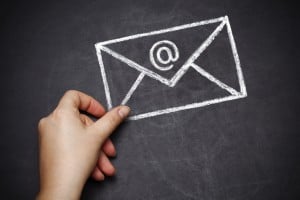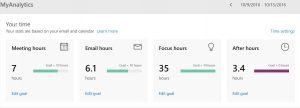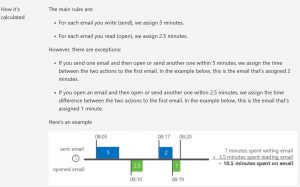The Secret To A Productive Day
The best way to be productive is to not feel the urge to be connected all the time.
 Every time I am in trial, I spend the following two weeks nursing my inbox and sending out apology emails to people for not getting back to them sooner. In trial, I don’t have access to email during work hours, and if I did, I wouldn’t check it anyway. Sometimes, I triage my inbox at night, but it’s way too consuming of a task while trying to simultaneously prepare for a cross exam. But, we don’t really notice how annoyingly time-consuming it is to answer email during the day because we do it in short bursts throughout the day. Try to do it all at once for the day and you’ll see how involved of a task it is. I think it’s great to be connected all the time, but as lawyers, we need to ask ourselves if the ability to have instant 24/7 communication helps or hurts our clients and the work product we provide.
Every time I am in trial, I spend the following two weeks nursing my inbox and sending out apology emails to people for not getting back to them sooner. In trial, I don’t have access to email during work hours, and if I did, I wouldn’t check it anyway. Sometimes, I triage my inbox at night, but it’s way too consuming of a task while trying to simultaneously prepare for a cross exam. But, we don’t really notice how annoyingly time-consuming it is to answer email during the day because we do it in short bursts throughout the day. Try to do it all at once for the day and you’ll see how involved of a task it is. I think it’s great to be connected all the time, but as lawyers, we need to ask ourselves if the ability to have instant 24/7 communication helps or hurts our clients and the work product we provide.
Recently, I noticed an analytics button in Outlook that brought up a bunch of statistics on how I’m spending my days and whether I am above or below my goals. After some poking around, here’s what I found out.


Early Adopters Of Legal AI Gaining Competitive Edge In Marketplace
The analytics are prepared by a Microsoft Program called Delve. I wrote a little about Delve a year ago when it was just rolling out. Delve is a free app for Office 365 users. It looks at data from your Outlook calendar and inbox (if you turn on that feature) to see how you are spending your day. Here is a snapshot of how I spent last week:

The meetings thing is slightly misleading because I have meetings on my calendar like hearings and depos that other people I work with are attending, but are on my calendar so I know when they are happening.
Emails, on the other hand, is probably pretty accurate. Here’s how it calculates the email stats:
Sponsored

Early Adopters Of Legal AI Gaining Competitive Edge In Marketplace

Is The Future Of Law Distributed? Lessons From The Tech Adoption Curve

Navigating Financial Success by Avoiding Common Pitfalls and Maximizing Firm Performance

Navigating Financial Success by Avoiding Common Pitfalls and Maximizing Firm Performance

The methodology for calculating how much time you spend reading or writing emails. It counts your phone, your laptop, your desktop, and every connected device your have.
Although it is using some guesses here that you spend on average 5 minutes writing an email and 2.5 minutes reading an email, even if you don’t actually spend that much time, that is probably pretty close to the minimum net amount of time lost by taking yourself away from a project to do either of these tasks and then get back into what you were working on.
Here is more data on my email habits that Delve collects.

Clicking on the “View details” button, I get the following graph:
Sponsored

Legal AI: 3 Steps Law Firms Should Take Now

The Business Case For AI At Your Law Firm


This last graph is the most important. It shows how many emails I’ve read and sent that week each hour, plotting it on a graph. It’s a 7-day graph, so it includes weekends too. That’s key to the secret of productivity.
The Secret to Productivity
Multitasking is a myth. If you don’t believe me, read this, or this, or this. There are a million (probably not an exaggeration) things fighting for your attention every day. So, let’s say you are writing a brief and it’s going to take you all day. You are stopping every five minutes to read or write an email, talk to someone, check Facebook, etc. You are now multitasking.
Think of it like how cars get better gas mileage on the freeway. It’s because they are not wasting energy starting and stopping. Likewise, if you can sit down uninterrupted for a few hours (with a few stretching breaks in between), you can produce a much better brief. The best way to do that when you are getting bombarded with emails is to not read them. I get the little pop-up notification in the bottom corner that tells me who sent me an email and the subject line, so I know if it’s a fire I need to put out or simply a calendar request item. Take another look at my map:

I get emails pretty steadily throughout the day, I just don’t read them hardly at all in the afternoon. This is a graph of weekly totals, so, at the most, I’m reading one or two emails an hour in the afternoon each day. Then, I save the remaining ones for the evening. As far as work-life balance goes and reading and responding to emails at home, it’s much less stressful for me to do that than spend a quarter of each work day answering emails at the office, forcing me to stay later. Responding to non-urgent emails is the perfect thing to do in the evening while you are watching Netflix. That’s why I have peaks in the evenings.
So the best way to be productive is to not feel the urge to be connected all the time. It’s okay sometimes to not respond to an email right away. Get in some good, mostly-uninterrupted stretches of work, and set schedules to read/respond to the non-urgent emails.
Jeff Bennion is a solo practitioner at the Law Office of Jeff Bennion. He serves as a member of the Board of Directors of San Diego’s plaintiffs’ trial lawyers association, Consumer Attorneys of San Diego. He is also the Education Chair and Executive Committee member of the State Bar of California’s Law Practice Management and Technology section. He is a member of the Advisory Council and instructor at UCSD’s Litigation Technology Management program. His opinions are his own. Follow him on Twitter here or on Facebook here, or contact him by email at jeff@trial.technology.








